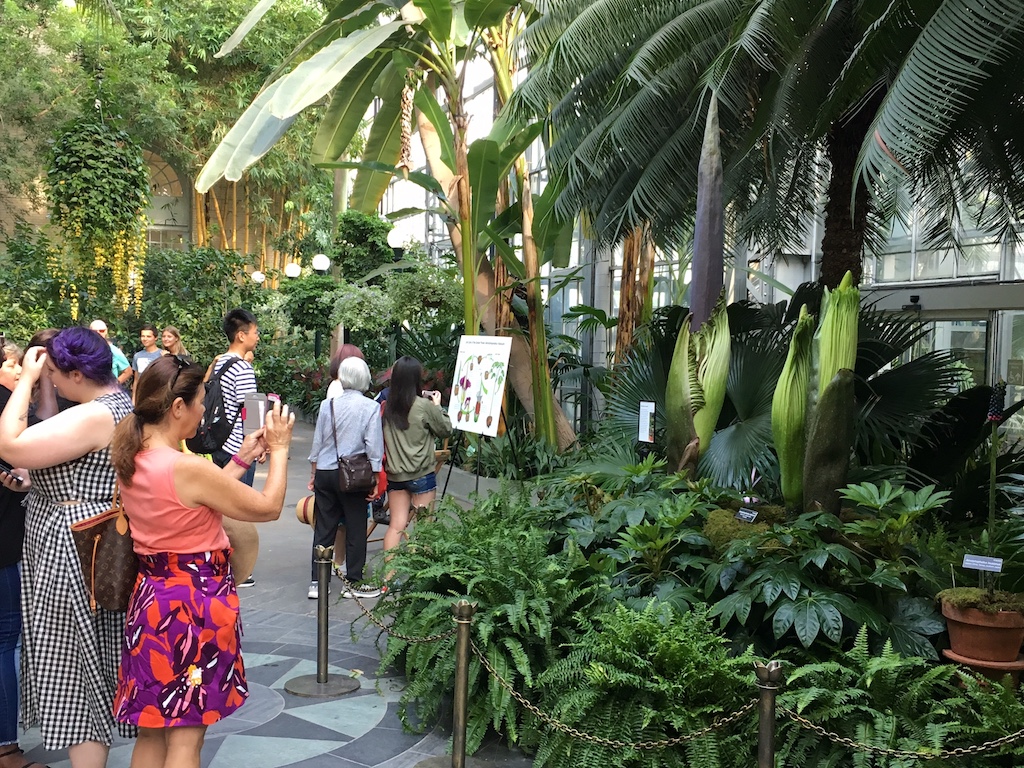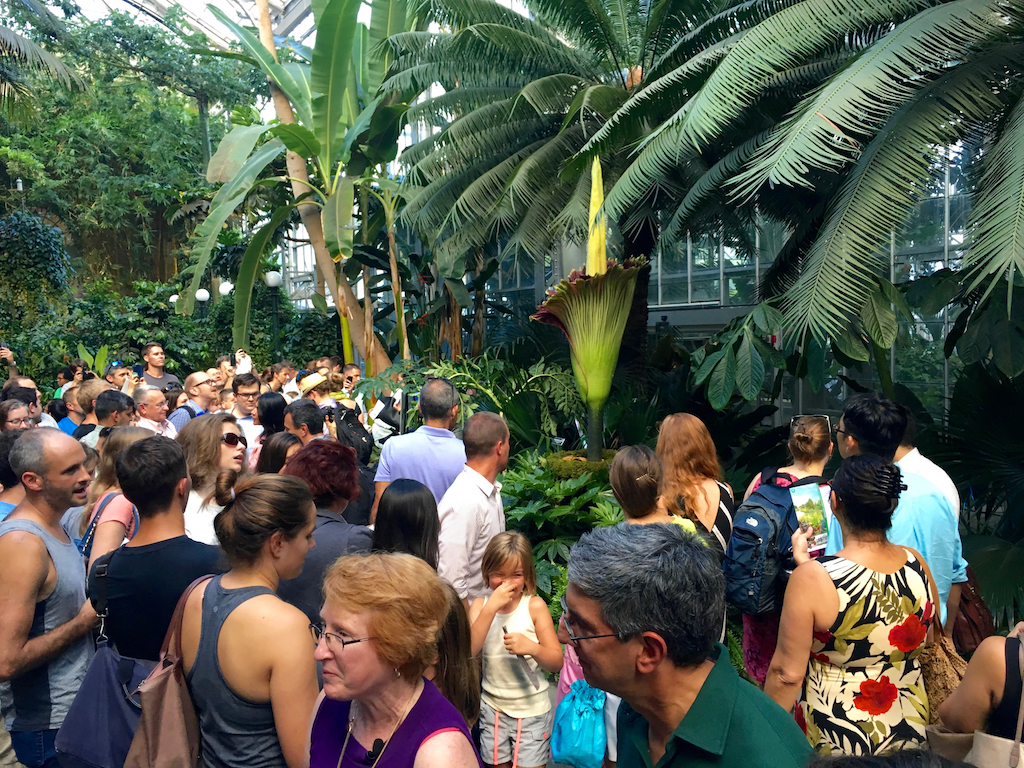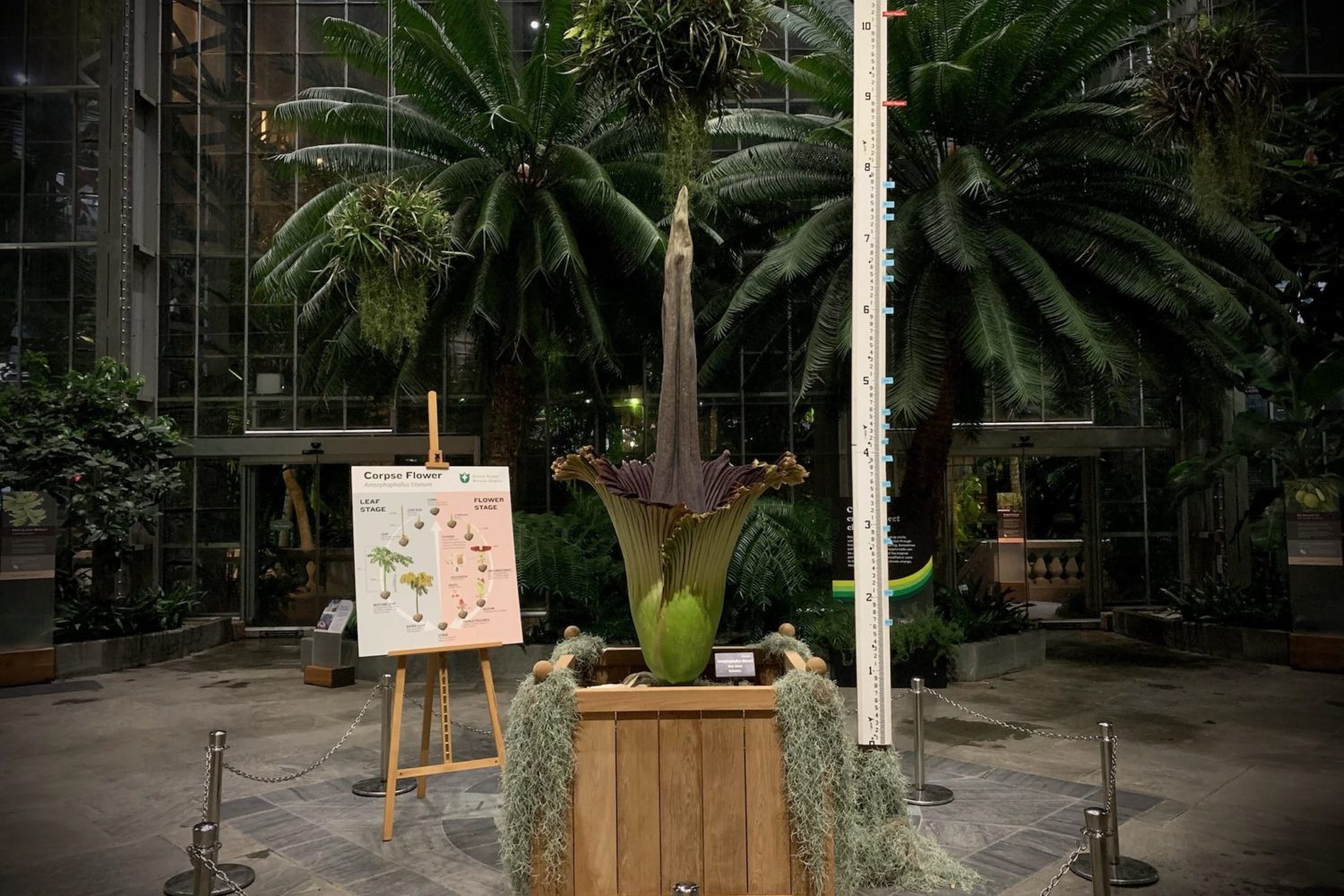A trio of the world’s stinkiest flowers choosing to unfurl in our nation’s capital this summer? Sometimes nature makes perfect sense. In a fitting tribute to 2017, not one, not two, but three corpse flowers are set to bloom at the United States Botanic Garden this weekend, making the triple bloom a first for DC and possibly the nation. “It’s fairly unprecedented,” says Ray Mims, spokesperson for the US Botanic Garden. “As far as we know, it’s the only time this has happened anywhere.”

The name is no joke: experts promise it smells like all the worst things in your dumpster. “It smells like rotting meat with dirty gym socks and maybe some really disgusting rotted garlic,” says Mims. “It’s gross. But it’s cool!”
Scientifically, the corpse flower is known as the titan arum, or Amorphophallus titanum. In true titan fashion, it’s the largest among unbranched inflorescence plants: flowers that look like a single bloom, but are actually hundreds of smaller flowers. The sunflower, this summer’s Instagram staple, is also an unbranched inflorescence.
In addition to their infamous scent, corpse flowers are notably large, with some flowers growing over 10 feet tall, and leaves often doubling that height. The largest of DC’s corpse flower trio clocks in at just over 7.3 feet. The flower has begun to slow its upwards climb, which indicates an upcoming bloom. “It’s been growing 5 to 6 inches a day until yesterday,” Mims says. “We’re thinking it will open Saturday or Sunday.”
The pungent odor will be multiplied this year, as at least two of the flowers are anticipated to bloom at the same time, likely next week. The plants operate on their own schedule, Mims says, but the garden will be open until 10 pm when the flowers bloom to to accommodate those who want a breath of death-scented air after leaving the office.
This summer, visitors also have the opportunity to see the corpse flower in all its life stages, from tuber to corpse: the tuber of last year’s plant is on display, as well as a giant leaf of a related species. “You just don’t see these very often,” Mims says. “You never see three together going into flower, and if you’re lucky enough to be at the garden when it blooms, as disgusting as it is, it’s fun to experience the smell.”

The odor, which Mims adds has been “retch-inducing” to some, and “overwhelming” to most others, is, simply put, a roundabout mating call. “The stench comes about when the female flowers are receptive to pollen,” Mims explains. During this time, corpse flowers heat up their insides—sometimes to over 98 degrees—which help spread the stink. “Those pulses of heat cause the air to rise, like a chimney effect,” Mims says. “It gets the stench up in the air [to] attract dung beetles and carrion beetles.” The bamboozled bugs help the flower pollinate other corpse flowers, and the circle of life carries on.
The US Botanic Garden’s website features a livestream of the flowers for those who want to stay current on the bloom’s progress. The selfies have already commenced, so expect lines when the plants actually open up. “[It’s] similar to a panda,” Mims says of all the hype. He takes it as an opportunity to get people excited about plants in general. “In the plant world, we’ll take what we can get.”


















